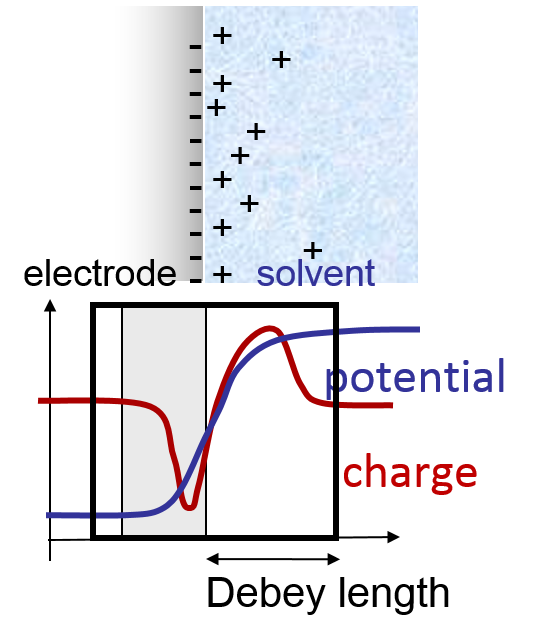Theoretical Simulation of Charged Liquid-Solid Interfaces
Theoretical Electrochemistry is currently a vivd topic. Current electronic structure methods using a plane wave representation of basis functions and state of the art KS-DFT approximations have been able to resolve elementary steps in heterogeneous catalysis. With a slab geometry, surfaces and reactions with gas phase molecules can be studied with sufficient accuracy. The so called "pressure gap" (the difference between UHV conditions in experiment and theory and the real life pressure) could be bridged by kinetic Monte Carlo MSS methods.
However, in case of electrochemistry one faces a charged surface in contact with a liquid electrolyte. The nature of the so called double layer, resulting from accumulation of charged solvated ions near the interface is much more hard to simulate. We are currently working on a specific MSS method which tries to combine the advantages of a Real Space represenation of wave functions and densities with Multigrid acelerated methods for the solution of (modified) Poisson-Boltzmann like continuum methods for he electrolyte.



